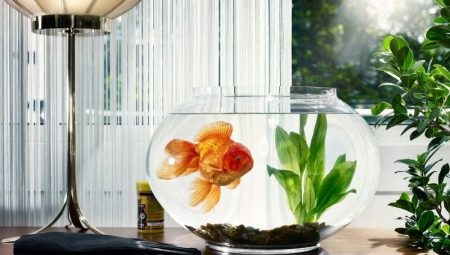For a newcomer who first picks up the inhabitants for his aquarium, it is important that his favorites live as long as possible. By inexperience, you can chase after external beauty and get a copy that will live on the strength of 1.5 years. To make the choice conscious, it is worth getting acquainted with the types of aquarium fish and learning about the features of their content.

How to determine the age of aquarium fish?
Just before buying, you should make sure that young fish swim in the aquarium of the pet store. It turns out that it is simple: the young growth is actively moving, it has brilliant scales, its eyes are clean without turbidity.
Old or sick fish are either inactive or lie at the bottom of the aquarium. However, in some species, signs of aging appear shortly before death. For example, thorns become discolored, separate scales fall out from barbs, fins sag from macropodes.
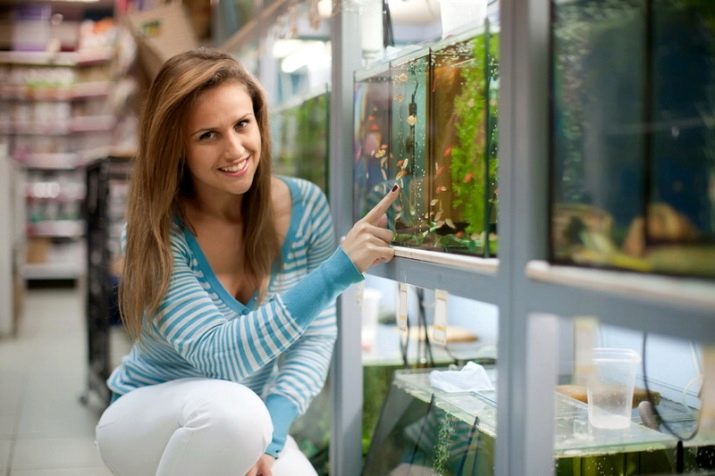
Then you should pay attention to color. As a rule, fry are paler in comparison with the bright saturated color of adults. For example, in Swordsmen, the color forms during the first months of life and at the age of six months the fish has a beautiful color.
The fry of the goldfish are distinguished by a greenish-bronze color, they have a rounded tail fin. Young catfish ancistruses are sold without a characteristic antennae on their faces - they appear in males after a year.
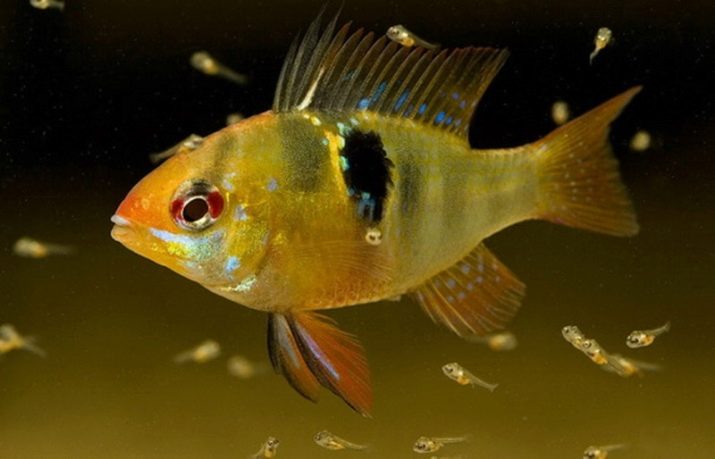
Young individuals are much smaller than adult representatives of the underwater world. It is important to ask the seller about the conditions in which the fish were kept. Indeed, the small size may indicate poor living conditions of fish and lack of food.
Life expectancy of different breeds
At home, aquarium fish can live from a year to 15 years. Often it depends on the size of a particular species: small fish live less, larger species have greater vitality.
Life expectancy can only be calculated for a particular species. For this, tedious compilation of special tables will not be necessary - it is enough to generalize the available data.
For example, tetra, neon and lalius can live from 4 to 6 years. The remaining miniature species like guppies, iris, pecelia, mollies, wedge-ginger and cetradon have been living for no more than 5 years.
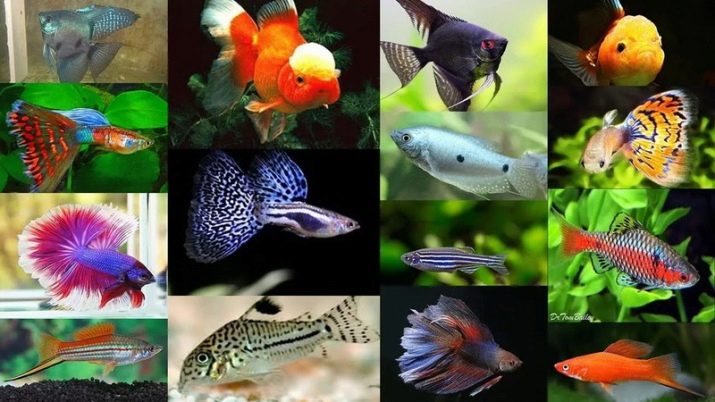
The life span of a larger piranha, pacu, cardinal, sturisome and shark bal is up to 10 years. Macropod dies at the age of 7, glass catfish - at 8 and ordinary loach - at 9 years.
A similar upper bar in frontoza, cichlamose, black morulis, bobia, plecostomus and barbus. A peculiar long-liver is Severum - with proper care and ideal conditions, this fish survives to 18 years.
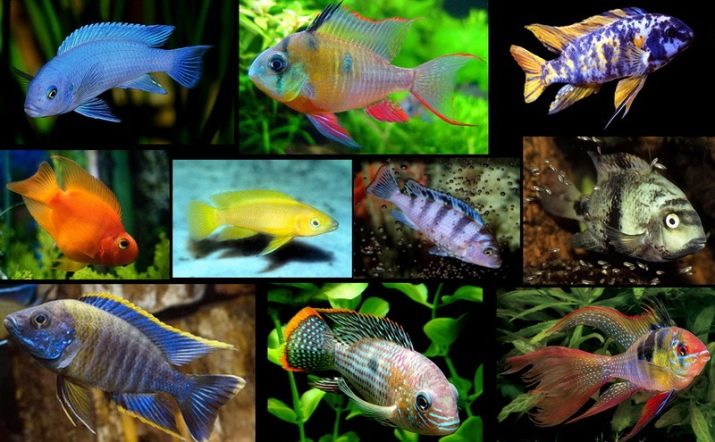
It is no coincidence that it was mentioned about leaving, because without observing the rules for keeping fish, they will not be pleased with their beauty and smooth movements. Therefore, a beginner aquarist should familiarize themselves with the conditions that he will have to create for future pets.
What factors affect the lifespan?
The life expectancy of fish is significantly affected by their gender. Males live much longer than females (especially in live-bearing breeds). Females often die from exhaustion during pregnancy or after unsuccessful spawning. The difference in life expectancy for any species is approximately 1-2 years.
In addition to gender differences, experts identify a number of factors that affect the longevity of aquarium fish. Beginning aquarists should familiarize themselves with them in more detail.
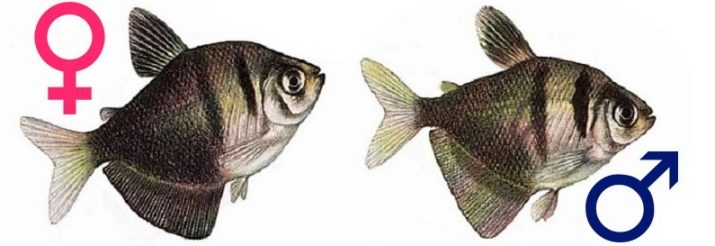
Water temperature and condition
An important condition is the temperature of the water in the aquarium. Some species are sensitive to the slightest temperature fluctuations. Even a deviation of 1-2 degrees can lead to illness and death of the pet.
Own thermoregulation in fish is completely absent, therefore, metabolic processes in their body are directly related to water temperature - the higher its temperature, the higher their metabolic rate.
It has long been observed that warm-water rocks live less than their counterparts, who prefer cooler conditions. These very centenarians are all varieties of golden fish. At the same time, experienced breeders note that in addition to their love of cold water, these breeds are distinguished by their peaceful nature, which makes them good neighbors.
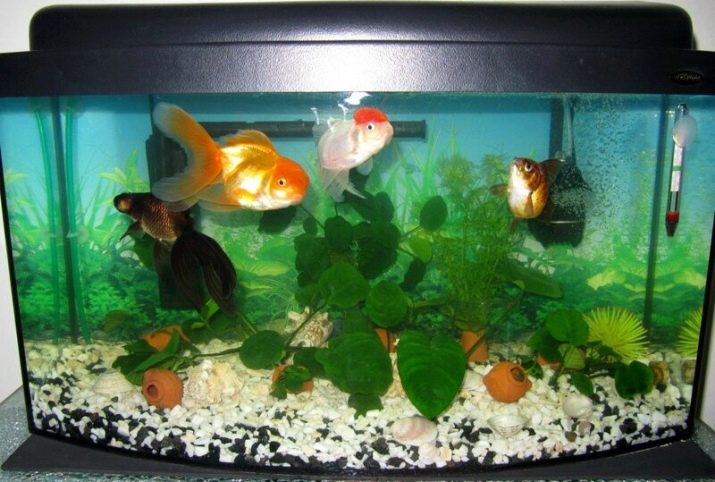
Another important factor is the condition of the water. The liquid must meet the requirements of a particular type, so before buying it is worth making sure that only heat- or cold-loving species settle in the aquarium.
You should take into account the preferences of the selected breed for acidity and water hardness, as well as observe temperature conditions. For example, discus and scalar require that the water temperature be at least 25-31 degrees, acidity - 5.5-6.5 Ph and hardness - 1-4 units.
For viviparous fish, the acidity of the water should be 7-8.5 Ph at a hardness of 15-25 and a temperature of 23-28 degrees. For labyrinths, these indicators are 6.5-6.7, 5-10, 23-28, respectively.
The hardness and acidity of the water is determined using special tests, the temperature is monitored using a thermometer. Aquarium fish easily adapt to the proposed conditions, but most species require water of moderate hardness. A breeds such as barbs, cockerels and neons are only suitable for soft water.


Among other things, the aquarium needs to be cleaned regularly, since dirty water is toxic, pathogenic bacteria develop in it that have a detrimental effect on the condition of the fish. Therefore, the obligatory attributes of the aquarium should be a compressor and a filter for water purification. And once a week, a third of the main volume should be replaced with clean, standing water.
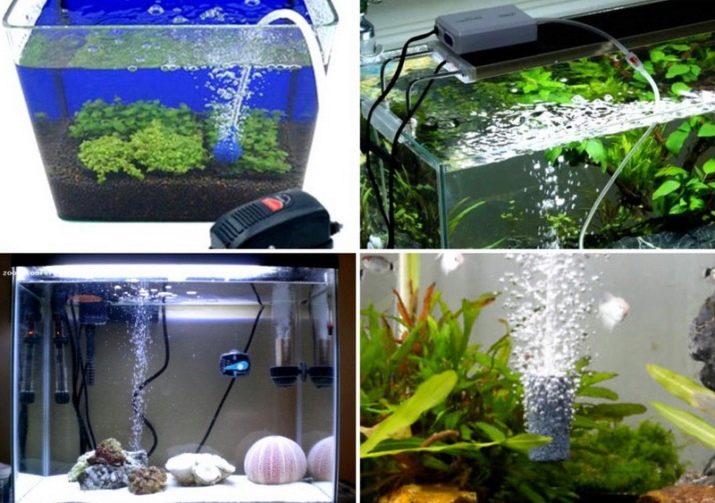
Right neighborhood
Properly selected breeds have a significant impact on the life expectancy of the aquarium inhabitants. For example, aggressive males get along well with phlegmatic catfishes and calm tetras, macrognatuses, cullets, and swordsmen.
All types of goldfish coexist well with each other, but it is better not to let small representatives of the aquarium fauna start. Goldfish are omnivorous, are in constant search of food and can eat their neighbors. Adjacency to a tarakatum or corridor is allowed.
Together with small guppies, bots, neons, as well as blue, white, diamond, green-strip and lemon tetras will get along. Good neighbors for barbs will be swordsmen, zebrafish, bots and gourami.
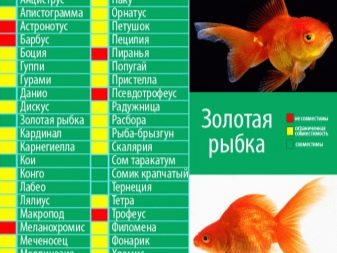

Carnivorous cichlids are not distinguished by hospitality, but get along well in the same aquarium with catfish, beats and gouras (especially if they grew up together). Black-striped cichlids, astronotuses, discus, mileus, chemichromis red coexist with piranhas.
As neighbors for these predators, two types of cichlomas are also suitable - meek and severum. Any other species will be perceived by these dangerous beauties as prey, so do not experiment with sharing.

Experienced breeders say that picking up compatible breeds of fish is not enough. You need to provide your pets with shelter in the form of grottoes or densely planted algae, in which they can hide and relax.
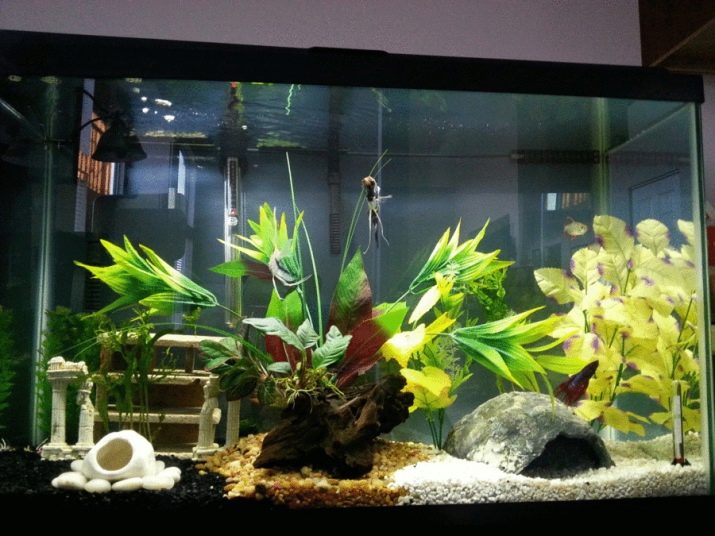
It is important to avoid overpopulation of the aquarium - if several large schools live in a small tank at once, the fish will constantly experience stress, and their life will be significantly reduced.
Diet
In the pet shop, you can pick up ready-made food for a particular breed of aquarium fish. Some feeds enhance the natural color, while others enhance immunity. There are separate products for predators and herbivorous fish.
Universal options for carnivorous and omnivorous breeds are on sale. It is possible to purchase food for fry and crustaceans. All feeds are based on natural ingredients, do not provoke the growth of algae in the aquarium and contribute to the rapid saturation of fish.

However, the finished feed is very high in calories, so fish cannot be overfed with them. Otherwise, some species die, while others are obese. Even if the behavior of the fish does not portend harm, it is worth paying attention to the state of the aquatic environment.
In case of overfeeding, the water quickly becomes turbid after replacement, algae and the walls of the tank are covered with slippery coating. A film forms on the surface of the water, and the liquid smells unpleasantly of rot.
In order to avoid troubles, you should make a certain feeding schedule and strictly follow it. If the family has small children, you need to explain to them that fish are fed only at strictly defined hours.
Ideally, the feed served should be eaten in minutes. If this does not occur, the diet of aquarium fish should be reviewed. Indeed, at each stage of development, each individual has its own requirements for eating.
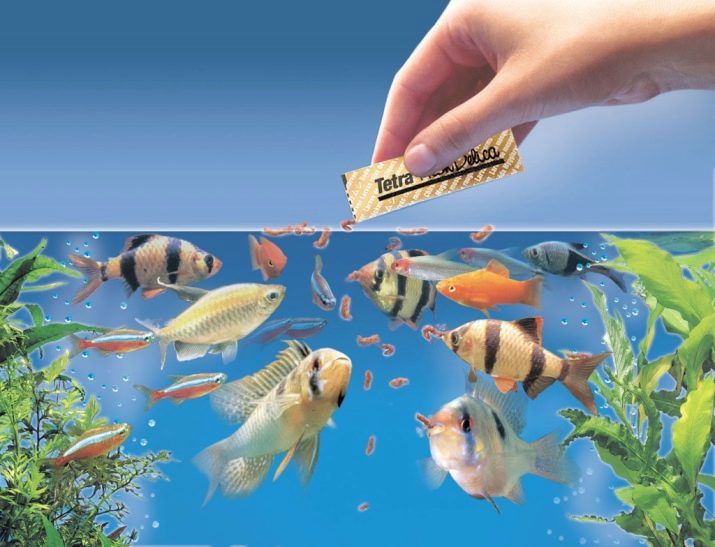
These recommendations may seem very troublesome, but in fact, a beginner aquarist only needs a responsible attitude to his future pets. After all, every owner of the aquarium wants to be proud of their ability to grow and contain beautiful bright fish.
How to extend life?
The fish will live longer if the owner will accurately follow the simple rules for caring for them. In particular, they relate to regular cleaning of the aquarium, timely cleaning of feed residues and compliance with the feeding schedule.
Sick fish need timely treatment. To prevent an epidemic, sick individuals should be isolated from the aquarium and treated in a separate container. So that pets can hide and relax, they should plant live algae in the aquarium.
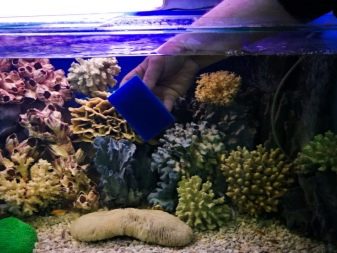

It is important to avoid overpopulation, otherwise the fish will be in constant stress.Many options for calculating the number of fish are considered controversial, so experts recommend starting from the displacement of the capacity and size of the fish itself.
For example, fish up to 4 cm in size like a cardinal, guppy, parsing or neon will look good in an aquarium from 10 liters with a density of 1 liter per individual. For 6-centimeter pecilia, thorns, Hasemania, rhodostomus, minor and barbus, a capacity of 20 liters is suitable. Landing density - 1.5 liters per individual.

Swordsman, mollies, apistogram, cross, black barbus should be placed in an aquarium of 150 liters at the rate of 3-10 liters of water per fish. For larger gold fish, angelfish and zebrafish of Malabar, a capacity of 200 liters is suitable. There are no specific rules on the number of fish, it is important to take into account the nature of the individual.
Large fish like cichlamose, astronotus, and acara will have a volume of 250 liters (for a pair) or 500 - for a flock. Discus require special conditions - they need an aquarium of 200 liters at the rate of 50 liters per individual.
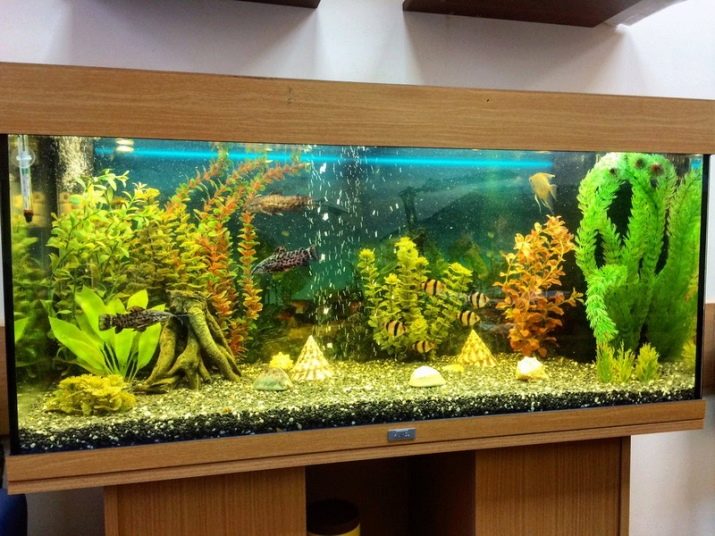
The only fish that benefit from overpopulation are the Malawian cichlids - their dense population makes them less aggressive. Bottom fish in total are not taken into account. If the displacement allows, you can put a few catfish and bots into the aquarium. Up to 5 digging catfish and one catfish sucker freely coexist in one container.
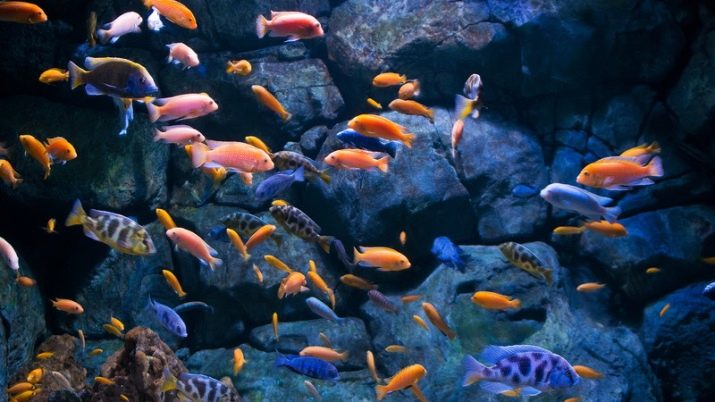
All the rules and recommendations discussed above will help a novice aquarist create his own underwater world and extend the life of its inhabitants.
Tips for beginner aquarists, see the next video.
